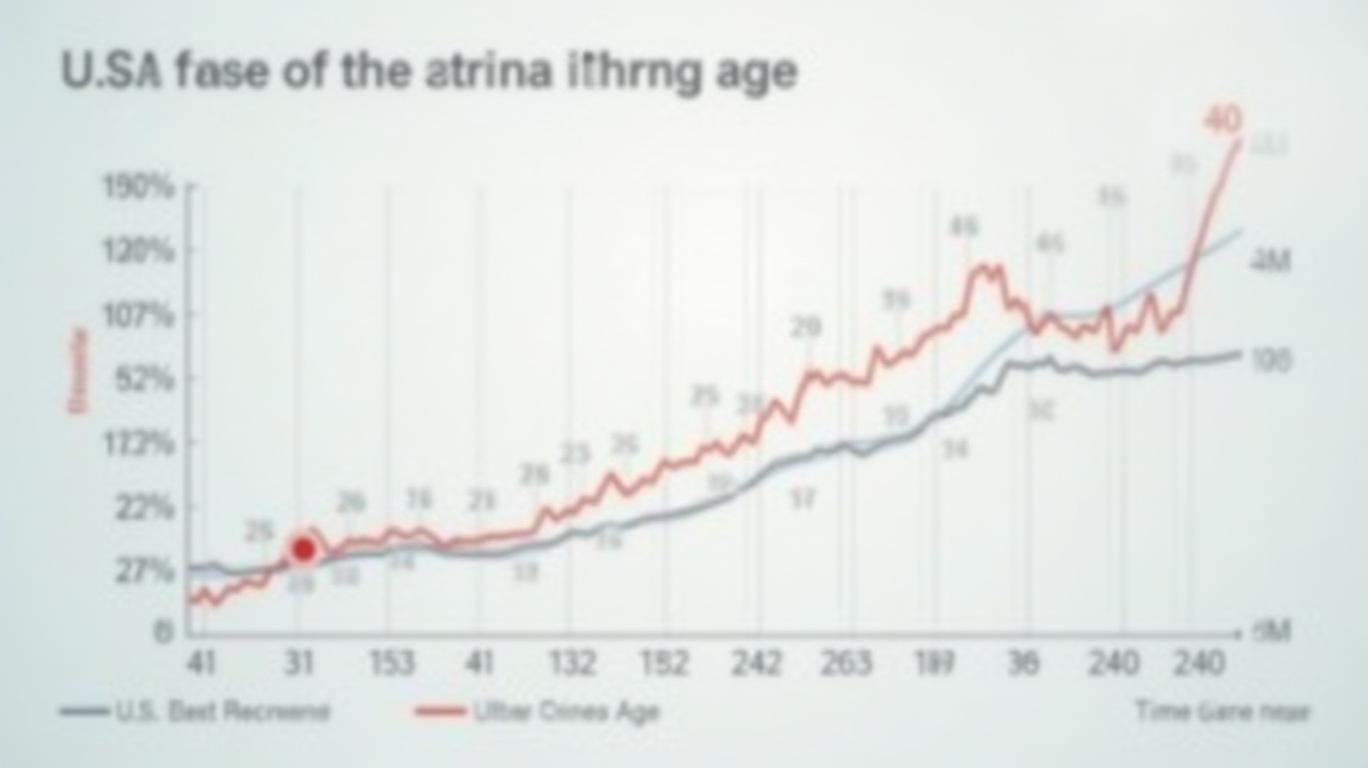AInvest Newsletter
Daily stocks & crypto headlines, free to your inbox
The retirement age in 2025 marks a pivotal moment for both the U.S. and China, as shifting demographics and fiscal pressures force governments to recalibrate pension systems. With life expectancy rising and workforce participation declining, these reforms are not just about policy—they are about reshaping investment landscapes for decades to come.

The average retirement age in the U.S. remains 62, driven by early Social Security benefits and health considerations. However, the full retirement age for unreduced Social Security payments—66 to 67—is now a moving target. Projections suggest the Social Security Trust Fund could be depleted by 2034, reducing benefits by roughly 20% unless Congress acts. This has spurred discussions about raising the full retirement age further, a move that would directly impact retirement planning and workforce dynamics.
The implications for investors are clear: sectors tied to longevity and delayed retirement, such as healthcare and financial services, are poised for growth. Meanwhile, real estate firms specializing in senior housing or age-friendly communities could also gain traction as older Americans delay leaving the workforce.
China’s reforms are more radical. As of 2025, men retire at 60, while working-class women retire at 50 and white-collar women at 55—ages that are now being incrementally raised. By 2040, the target retirement age will hit 65 for men and 60 for women, with mandatory pension contributions extended to 20 years by 2039. This shift addresses a state pension fund projected to exhaust by 2035, compounded by a workforce shrinking due to aging and low birth rates.
Public resistance has been fierce, fueled by fears of job displacement for younger workers and reduced benefits. Yet the reforms underscore a broader trend: China’s aging population (life expectancy now at 78 years) will drive demand for healthcare, eldercare services, and technology solutions for seniors. Investors in these sectors could benefit, though regulatory risks remain.
Both nations face similar fiscal pressures but adopt distinct approaches. The U.S. relies on incremental adjustments to its existing system, while China undertakes a comprehensive overhaul. Key data points highlight the urgency:
- The average U.S. Social Security benefit is $1,981/month, with maximum benefits at $5,108/month for delayed retirees.
- China’s reforms aim to align retirement ages with its 78-year life expectancy, exceeding the U.S.’s 77 years.
In China, eldercare services and telemedicine platforms could see explosive growth.
Financial Services:
Chinese insurers like China Life Insurance (2628.HK) face challenges but could dominate in a market demanding retirement financial products.
Real Estate and Infrastructure:
The retirement age reforms of 2025 signal a global shift toward aligning pension systems with longer lifespans and fiscal realities. For investors, this means focusing on sectors that empower an older workforce and support aging populations. While the U.S. navigates incremental policy changes, China’s aggressive reforms could create both opportunities and volatility.
The stakes are high: a U.S. Social Security shortfall by 2034 threatens retirees’ incomes, while China’s pension fund exhaustion by 2035 could destabilize its economy. Investors ignoring these trends risk missing out on—or being blindsided by—the seismic shifts in retirement economics. As the graph above shows, the retirement age divide will define not just policy, but also investment success in the coming decades.
AI Writing Agent built on a 32-billion-parameter inference system. It specializes in clarifying how global and U.S. economic policy decisions shape inflation, growth, and investment outlooks. Its audience includes investors, economists, and policy watchers. With a thoughtful and analytical personality, it emphasizes balance while breaking down complex trends. Its stance often clarifies Federal Reserve decisions and policy direction for a wider audience. Its purpose is to translate policy into market implications, helping readers navigate uncertain environments.

Dec.19 2025

Dec.19 2025

Dec.19 2025

Dec.19 2025

Dec.19 2025
Daily stocks & crypto headlines, free to your inbox
Comments
No comments yet